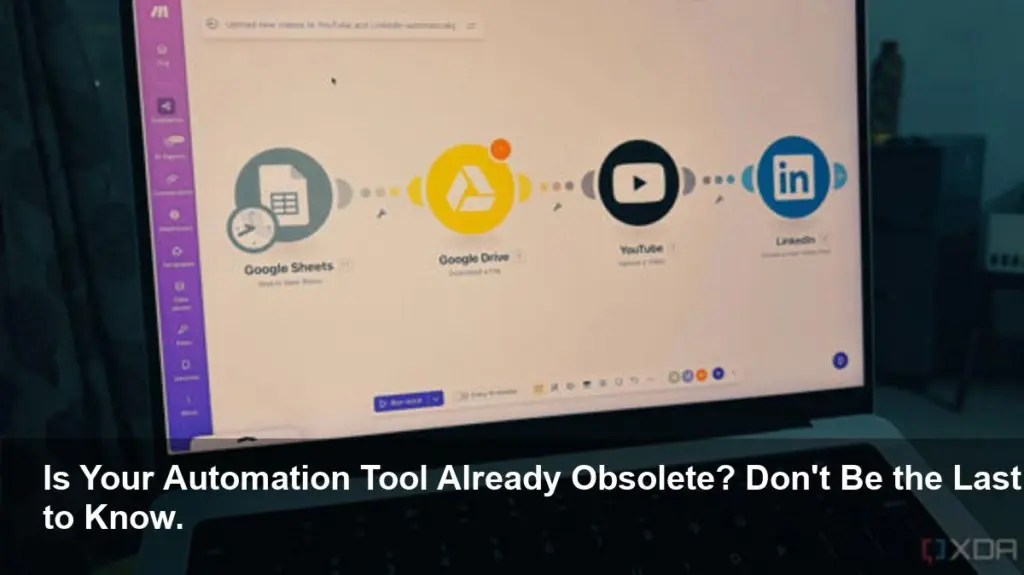- Many long-time users of established automation platforms like Zapier and n8n are beginning to explore newer, more advanced alternatives.
- Key frustrations driving the switch include restrictive pricing models, steep learning curves for complex tasks, and limitations in handling advanced, multi-step workflows.
- The emerging “next-gen” automation tools often feature AI-assisted workflow creation, more intuitive user interfaces for complex logic, and more flexible, scalable architectures.
- This shift signals a maturing market where users demand more power, flexibility, and intelligence from their automation stacks beyond simple point-to-point connections.
For years, the automation landscape has been dominated by two giants: Zapier, with its user-friendly interface, and n8n, the open-source darling for developers. Many of us built our businesses and streamlined our lives on the backs of these platforms. But the ground is shifting. A growing number of power users are making a difficult decision: it’s time to move on. They’re abandoning the familiar for a new class of automation platforms that promise to overcome the limitations of the old guard.
The Golden Cages of Zapier and n8n
It’s not that Zapier and n8n are bad tools. Zapier democratized automation, making it accessible to millions with its simple “trigger-action” model. If you need to connect two popular apps quickly, it’s still a contender. On the other hand, n8n offered a powerful, self-hostable alternative for those who wanted more control, complex branching logic, and a fair-use pricing model.
However, as workflows become more sophisticated, users are hitting walls. Zapier’s task-based pricing can become prohibitively expensive for high-volume or complex multi-step Zaps. Advanced features often feel bolted on, and true programmatic logic is difficult to implement. Conversely, while n8n is powerful, its learning curve can be steep for non-developers, and managing a self-hosted instance requires technical overhead that many teams can’t afford.
What Defines a “Next-Gen” Automation Platform?
The exodus from these established players isn’t towards a single competitor, but to a new philosophy of automation. The platform hinted at in the original story is part of a wave of tools built for the next decade of digital work.
AI-Powered Workflow Building
Instead of manually searching for triggers and actions, these new platforms often leverage AI. Users can describe their desired workflow in plain English, and the system intelligently suggests the necessary apps, modules, and logic. This dramatically lowers the barrier to entry for creating incredibly complex automations.
Visual Debugging and Error Handling
One of the biggest headaches in automation is figuring out why a workflow failed. Next-gen tools are being built with robust, visual debugging tools. They allow you to inspect the data at every single step, identify the exact point of failure, and build sophisticated error-handling routines without writing a line of code.
Scalability and Pricing Sanity
The new kids on the block are rethinking pricing. Instead of punishing users for creating complex, multi-step workflows (like task-based models do), many are moving towards consumption-based pricing that better reflects the actual server resources used. This makes them far more scalable and predictable for businesses that rely heavily on automation.
Are You Ready to Make the Switch?
Leaving a platform you’ve invested years in is daunting. It involves rebuilding dozens, if not hundreds, of workflows. Yet, the consensus among those who have made the leap is clear: the long-term benefits in power, flexibility, and cost-savings are worth the short-term pain. If you find yourself constantly fighting the limitations of your current tool, it may be time to see what the future of automation looks like. The revolution is already here; the only question is whether you’ll be a part of it.
Image Referance: https://www.msn.com/en-us/news/technology/i-m-finally-moving-on-from-zapier-and-n8n-and-this-is-the-automation-platform-i-m-switching-to/ar-AA1OMYto?apiversion=v2&domshim=1&noservercache=1&noservertelemetry=1&batchservertelemetry=1&renderwebcomponents=1&wcseo=1

